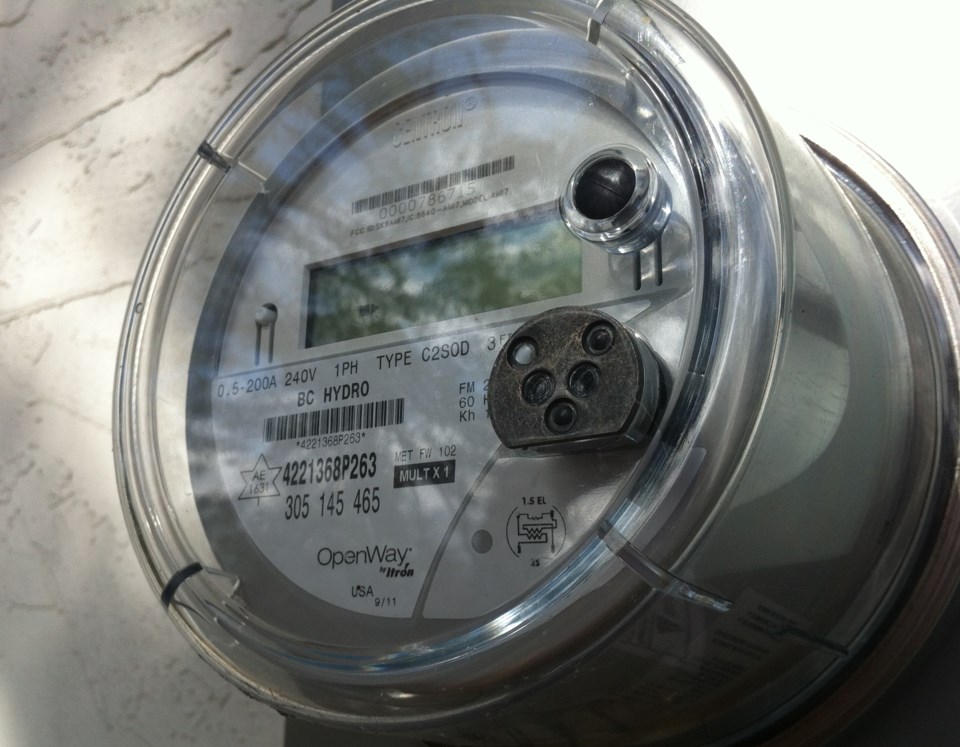A special fund that B.C. Hydro set up to help customers in financial crisis with their bills paid out less than a quarter of what it expected in its first year, so the utility wants to reduce the amount account holders pay in to cover its costs.
B.C. Hydro set up the customer-crisis fund in 2018 in a three-year pilot project as part of its last rate-setting application to the B.C. Utilities Commission.
In its first year, B.C. Hydro collected $4.5 million through a 25-cents-per-month rate rider on customer bills, but only spent $1.7 million on the program, according to an interim report filed with the Utilities Commission at the end of July.
“We found our program costs to be lower than we had anticipated. For example, the set-up costs for the program were around half of what we originally estimated,” B.C. Hydro spokeswoman Tanya Fish said in an email response to questions.
“Participation during the first year of the pilot was also lower than estimated, largely due to us not having have a comparable program to base participation on.”
The crisis fund paid out just $847,518 in direct grants to 2,282 customers unable to pay their bills, at an average of $371 per customer. In its initial estimate, B.C. Hydro estimated it would pay out $4.1 million to some 10,250 customers when it launched the fund in 2018.
The 6,416 applications for help from the fund that the utility received in the first year of operation was less than half the 15,000 it anticipated, according to the interim report.
So the utility wants to cut the rate rider, the special charge to customers, to 13 cents per month from 25 cents, effective Oct. 1.
“Based on the [crisis fund] rate rider, the current [fund] costs and the forecast costs of operating the (program) for the remainder of the three-year pilot to April 30, 2021, B.C. Hydro expects that the revenue collected will continue to be greater than the forecast costs,” said Fred James, Hydro’s chief regulatory officer in a letter to the B.C. Utilities Commission.
If B.C. Hydro kept collecting the rate rider at the 25-cent level, James wrote that the surplus in the account could reach as high as $7.9 million by the end of the three years.
Cutting it to 13 cents could still leave a $3.8-million surplus at the end, but would provide Hydro with leeway to accommodate increased participation as more customers become aware of it.
The idea for the crisis fund came from the B.C. Old Age Pensioners Organization during B.C. Hydro’s 2015 hearing before the B.C. Utilities Commission to set electricity rates.
With electricity rates ratcheting up, Hydro was under pressure from anti-poverty groups to find some way to help low-income customers facing financial difficulty. The grants are not intended to cover the costs of customers who are simply behind on their bills, but rather to help customers facing a financial crisis and face potential disconnection.
B.C. Old Age Pensioners Organization president Jerry Gosling said in an email that the group’s members are “grateful that something is in the works to accommodate some hard-up members.”
That is not to say that the program doesn’t have its critics.
Some Hydro customers were caught off guard by the new rate rider and took offence to the additional 25-cents-per-month charge.
B.C. Hydro received 1,472 complaints from customers about the additional charge, according to its report.
Comparing it to a charity that customers have no choice about contributing to and questions about why it should be up to customers who are paying their bills and absorbing the same increases in electricity rates were among common complaints.
In its report, B.C. Hydro said it was too soon to determine whether the program has helped reduce its costs related to disconnections and re-connections. In her email, Fish said the utility hasn’t seen significant changes in its delinquent accounts rate, which stands at about 10,000 per month on average.



